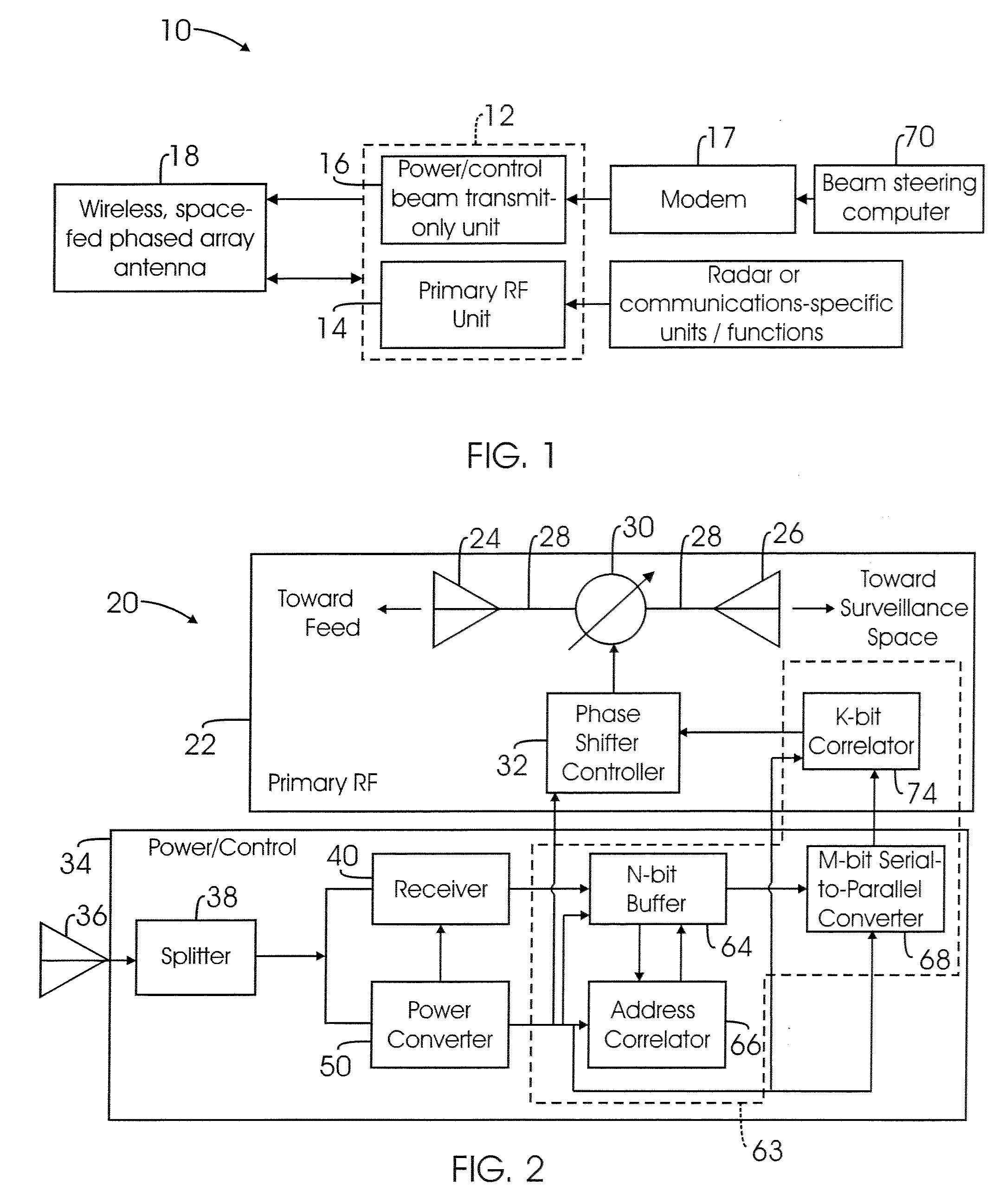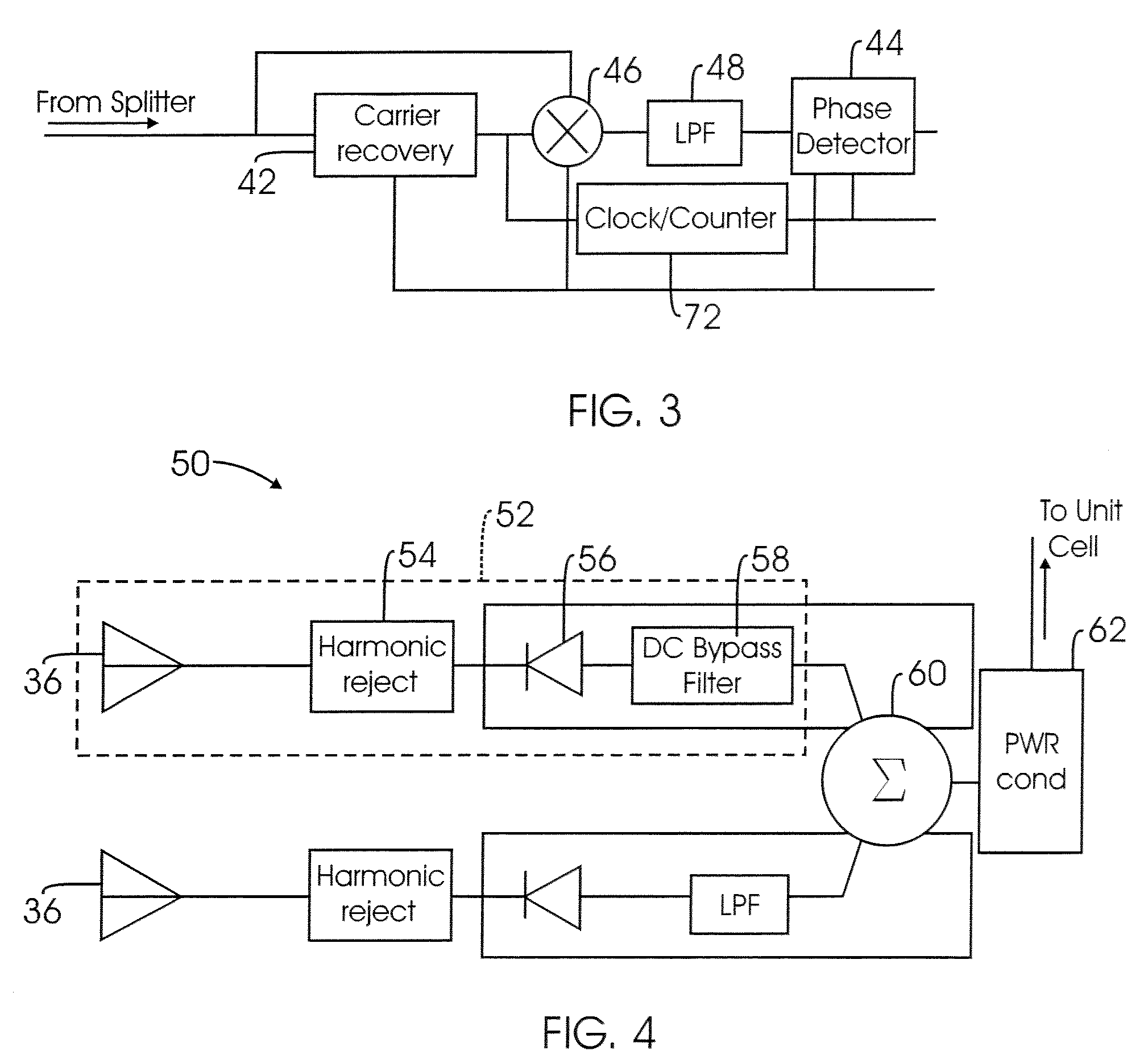System and methods for radar and communications applications
a communication application and radar technology, applied in the field of radar and communications applications, can solve the problems of high repair cost, high cost, and high mass per unit of phased array antennas, and achieve the effect of low areal density
- Summary
- Abstract
- Description
- Claims
- Application Information
AI Technical Summary
Benefits of technology
Problems solved by technology
Method used
Image
Examples
Embodiment Construction
”, one will understand how the features of the present embodiments provide advantages. These include a thin backplane, low areal density, ease of transport and ease of disassembly and reassembly as part of normal operation due to the array including individually removable and replaceable unit cells with no interconnections except the mechanical.
[0008]One embodiment of the present system for radar and communications applications comprises a wireless, space-fed, phased array of antennas including a plurality of unit cells. A first one of the unit cells includes a first one of the antennas. The first unit cell further includes a unit cell command interpreter configured to receive a command, determine whether the command is intended for the first unit cell, and relay the command to logic for enabling a phase shift controller of the first antenna.
[0009]One embodiment of the present methods for radar or communications applications comprises the step of wirelessly beaming microwave power f...
PUM
 Login to View More
Login to View More Abstract
Description
Claims
Application Information
 Login to View More
Login to View More - R&D
- Intellectual Property
- Life Sciences
- Materials
- Tech Scout
- Unparalleled Data Quality
- Higher Quality Content
- 60% Fewer Hallucinations
Browse by: Latest US Patents, China's latest patents, Technical Efficacy Thesaurus, Application Domain, Technology Topic, Popular Technical Reports.
© 2025 PatSnap. All rights reserved.Legal|Privacy policy|Modern Slavery Act Transparency Statement|Sitemap|About US| Contact US: help@patsnap.com



